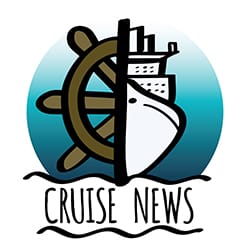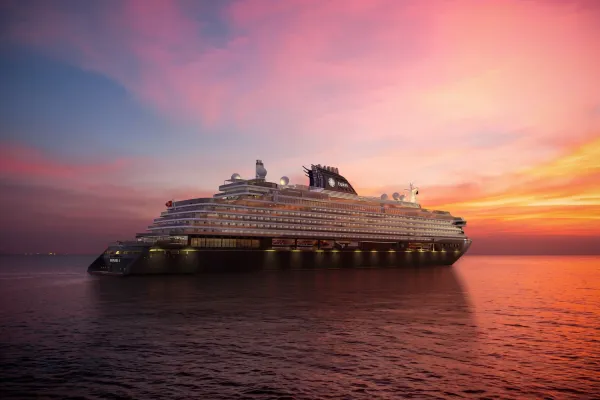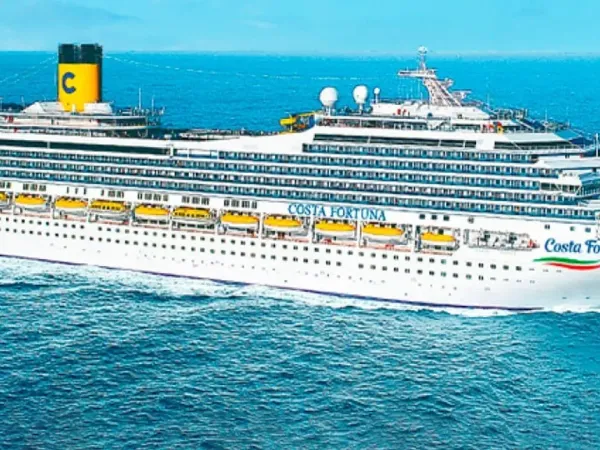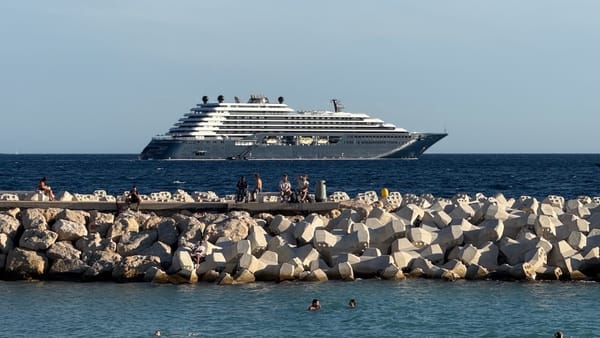Royal Caribbean Stock Rises 59 Percent Amid New Cruise Trends
Royal Caribbean’s rapid stock gains in 2025 reflect industry-wide momentum, shifting traveler demographics, and changing booking trends that are reshaping the cruise sector’s outlook.
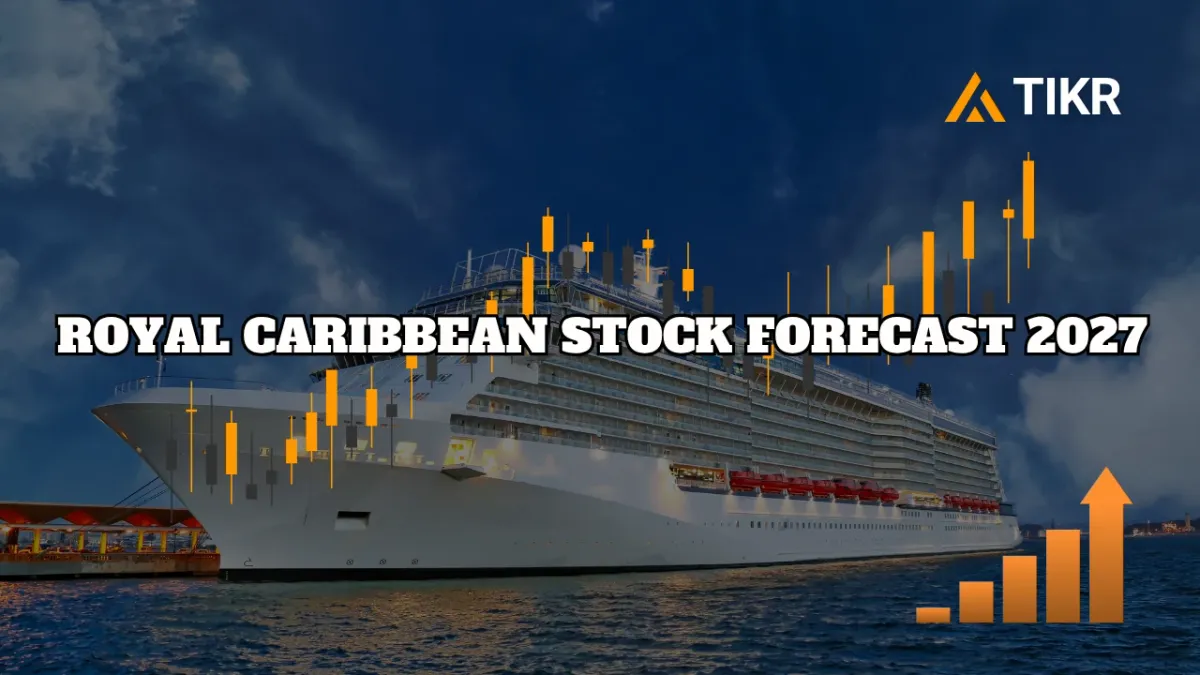
Royal Caribbean Cruises has outpaced its competitors in 2025, demonstrating remarkable stock performance and solidifying its position as a market leader. Year-to-date, the company's stock has surged by 59%, significantly outperforming peers such as Viking Holdings, which grew 44.7%, and Norwegian Cruise Line Holdings, which experienced a slight contraction.
Royal Caribbean's Financial Triumphs
The stock's robust growth is attributed to Royal Caribbean's strong financial results, including consecutive beats in adjusted earnings per share (EPS) for Q1 and Q2 2025. Following these achievements, the company raised its full-year guidance for EPS, forecasting an impressive 31% year-over-year growth for 2025.
CEO Jason Liberty emphasized the role of last-minute bookings in driving performance, stating, “Our second quarter results exceeded expectations, mainly driven by stronger-than-expected close-in demand.” This trend reflects broader patterns in the cruise industry, where reduced lead times for bookings have contributed to higher net yields and tighter availability.
Royal Caribbean also boasts competitive advantages against its peers, including stronger EBIT margins and its status as the only cruise operator offering dividends. The company’s resilience post-pandemic, coupled with its sustainability initiatives, further enhances its appeal as a long-term investment in a recovering industry.
Broader Industry Trends
The cruise sector as a whole has rebounded vigorously, with Norwegian Cruise Line and Carnival Corporation recording record-breaking results in Q2 2025. Carnival's adjusted net income tripled compared to the previous year, while Norwegian CEO Harry Sommer disclosed that bookings across its brands now exceed historical levels. In parallel, Lindblad Expeditions reported unprecedented demand for its co-branded National Geographic itineraries during late July, underscoring a surge in interest for immersive, destination-led travel.
This recovery coincides with improving macroeconomic conditions and increased investments in innovative offerings, including themed voyages and upgraded onboard experiences. Industry analysts project global passenger counts to rise from 29.7 million in 2019 to 37.7 million by 2025. This growth reflects heightened interest from millennial and first-time travelers, contributing to the diversification of cruise demographics.
Challenges Facing Cruise Operators
Although the overall outlook for the cruise industry remains optimistic, challenges persist. For Royal Caribbean specifically, concerns include its elevated valuation relative to peers, rising debt levels, and potential regulatory shifts. Furthermore, sustainability and security issues remain critical, with Royal Caribbean suspending calls to Labadee, Haiti, for an extended period due to U.S. State Department warnings about local crime and kidnapping threats.
In Hawaii, Norwegian Cruise Line faced operational disruptions when Pride of America passengers were stranded ashore after a tsunami warning forced the closure of Hilo’s harbor. Such incidents highlight the operational risks cruise lines may encounter and the importance of adapting itineraries and policies in response to unforeseeable circumstances.
Future Growth Opportunities
Amid these challenges, the cruise industry's momentum suggests further expansion in the coming years. Operators are leveraging broadened demographic appeal and an expanding global vacation market, with researchers projecting a growth in market share from 2% in 2019 to 3.8% by 2028. Millennials and younger travelers now account for about half of Royal Caribbean's customers, signaling a shift beyond traditional cruise demographics and fostering stronger overall demand.
Brands continue to develop innovative offerings to attract customers. Norwegian Cruise Line announced major upgrades to its private island, Great Stirrup Cay, set to feature a dynamic waterpark and family-oriented amenities by 2026. Seabourn is preparing for a 94-day eco-expedition voyage, departing in 2027, while Lindblad Expeditions reinforces its success within the immersive, small-ship travel segment.
Fleet investments further underscore the industry's commitment to enhancing passenger experiences and meeting sustainability goals. New small ships, themed voyages, and advanced eco-friendly operations are designed to cater to evolving consumer preferences and expand market share.
Frequently Asked Questions (FAQs)
What factors contributed to Royal Caribbean's exceptional stock performance in 2025?
Royal Caribbean's success can be attributed to beating adjusted EPS guidance in Q1 and Q2 2025, fueled by strong close-in demand and a revised full-year earnings outlook projecting 31% growth. These elements enhanced investor optimism despite valuation concerns.
Why are close-in bookings driving demand across the cruise industry?
Improving macroeconomic conditions, broadened demographic appeal, and enhanced product offerings have resulted in higher last-minute bookings. Cruise operators such as Royal Caribbean, Norwegian, and Carnival credit strong close-in demand with bolstering revenue and net yields.
How are cruise lines addressing sustainability concerns?
The industry has invested heavily in eco-friendly operations and destination-based experiences. For example, Seabourn's upcoming eco-adventure voyage emphasizes environmental stewardship, while Norwegian's upgrades to Great Stirrup Cay include greener infrastructure for family experiences.
Will strong demand impact last-minute cruise deals?
Yes. Close-in bookings allow operators to maintain higher pricing deeper into the booking curve, reducing the prevalence of last-minute discounts. Travel advisors recommend booking early or remaining flexible to secure availability and pricing.
What does expanding customer demographics mean for cruise operators?
Millennials and younger travelers now comprise a significant portion of the cruise customer base, driving broader interest in experiential travel. This shift presents opportunities for robust growth as cruise vacations become appealing to non-traditional travelers.
